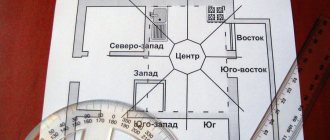Measuring time
The unit of time in astronomy is the day
- the period of time during which the Earth makes a complete revolution around its axis relative to some point in the sky.
Depending on this reference point, a distinction is made between the sidereal day
- the period of time between two successive culminations of the same name at the point of the vernal equinox, and
the true solar day
- the period of time between two successive culminations of the same name at the center of the Sun.
A solar day is about 4 minutes longer than a sidereal day, since the Sun moves among the stars in the direction of the Earth’s rotation, and in order to catch up with it, the Earth needs to make a little more than one revolution relative to the stars. To measure large periods of time, the tropical year
- the period of time between two successive passages of the center of the Sun through the vernal equinox.
To measure time, you can use both sidereal and true solar days. If sidereal days are used, the time measured is called sidereal time
, and if true solar days - then
true solar time
. However, this does not mean that we are measuring two times independent of each other. In fact, these are like two different rulers for measuring time. Thus, the distance between cities can be expressed in both kilometers and miles. The situation with time measurement is the same.
Determining local time at a given point.
We take the value of 8 degrees and multiply by 4. It turns out 32 minutes. This will be the approximate difference between Moscow time and real solar time. Therefore, when choosing a time, do not forget to adjust solar time to local time and choose the hour correctly! Denis, hello! Can you tell me where you get the longitude to calculate local time? Help me understand how to determine the solar time for Warming the Money Star in April 2014 in Pyatigorsk, Stavropol Territory? I'm confused for everyone.... Welfare and Prosperity to you!!!
Did I calculate correctly that the difference between maternity and astronomical time is 58 minutes (14.5 degrees)? That is, if I want to make a horizontal sundial, I will need to rotate it 14.5 degrees clockwise so that the sun shows maternity time? Thank you in advance! Denis, please help me, I just can’t figure out: “local time is less than solar time” means that the event will occur earlier? I live in GMT -5 (Toronto).
9.1. sidereal time
The beginning of the sidereal day on a given geographic meridian is taken to be the moment of the upper culmination of the vernal equinox. sidereal time
- the time elapsed from the moment of the upper culmination of the vernal equinox to any other position, expressed in fractions of sidereal days (sidereal hours, minutes and seconds).
Thus, sidereal time s
is equal in magnitude to the hour angle of the vernal equinox, or the sum of the hour angle of any luminary
O
and its right ascension (see Fig. 17):
| (11) |
| (12) |
From here, in particular, it follows that at the moment of the upper culmination of any star
O,
sidereal time is exactly equal to its right ascension.
| Rice. 17. Relationship between sidereal time s and the right ascension and hour angle t of the luminary |
DAYS AND CALENDAR
TIME MEASUREMENT
The definition of a unit of time is based on a periodic phenomenon in nature - a day - a period of time during which the Earth makes a complete revolution around its axis.
The daily rotation of the Earth, determining the pattern of day and night, the cyclical nature of many processes on Earth, the routine of life and activities of people, is the most appropriate and convenient basis for measuring time, which is given by nature itself and which humanity has long used. The length of the day can be determined using a luminary or a point, fixing the moments of two successive climaxes, if their positions in the starry sky are known. However, the definition of a day is associated with practical difficulties caused by contradictory requirements for the choice of a unit of time. To determine the day in our time, three auxiliary points are used, namely: the vernal equinox point, the center of the true Sun, the point of the average Sun. The length of the day, which is determined by each of the three points, is different, and therefore it is necessary to use all three units of time - the sidereal day, the real solar day and the average solar day. The time they measure is called sidereal , present solar time , and mean solar time, respectively. The combination of these methods for determining the day complicates some computational work, but ensures full compliance of the calculation of time with the practice of human life and greater accuracy in measuring time by astronomical methods.
The day and its parts are used to measure short periods of time, and for long periods of time the concept of a year is used. The time interval between two successive passages of the true Sun through the vernal equinox (^) is called the tropical year . T^=365d,2422 s.s.s. (average solar day).
Due to the precession of the earth's axis, the vernal equinox point slowly moves towards the Sun, so the Sun comes to the same part of the sky not through the tropical year, but through the sidereal year (sidereal period).
The period of time during which the Earth makes one full revolution around the Sun relative to stationary vision is called a sidereal year . T=365d,2568 s.d.
Over the past three decades, the accuracy of determining the length of the day from astronomical observations has increased by a whole order of magnitude and reaches 0.s001 per day; also increased accuracy of astronomical pendulum and quartz clocks. New types of clocks have been created - molecular and atomic , which store time with an accuracy of 5·10-8 s per day, satisfying the most complex requirements of some scientific institutions.
Sidereal Days and Sidereal Time
The determination of the sidereal day follows from the apparent rotation around the Earth of the vernal equinox. The upper culmination of this point is taken as the beginning of the day. The time interval between two successive upper culminations of the vernal equinox on the same meridian is called the sidereal day.
A sidereal day is divided into 24 sidereal hours, a sidereal hour into 60 sidereal minutes, a sidereal minute into 60 sidereal seconds. The time that passes from the moment of the upper culmination of the point of the vernal equinox to its position at a certain moment, expressed in fractions of a sidereal day, is called sidereal hour . Denoted by the Latin letter s.
The hour angle of the vernal equinox, expressed in hourly units, is numerically equal to sidereal time at a given moment. The time that has passed since the beginning of the day is equal to the hour angle of the vernal equinox. To determine it, stars with precisely defined coordinates are used.
If the hour angle of any star M is determined (Fig. 1), then the sidereal hour (arc Q1Q) is equal to the sum of two arcs: arc Q1D (right ascension of the star) and arc DQ (hour angle of the star). Hence,
s=α+t (1)
where α is right ascension and t is the hour angle. When observing a star at the moment of the upper culmination, the hour angle is zero and then:
s=α (1a)
This dependence is used to determine sidereal time from observations of the moments of stellar culmination using a passage instrument. Sidereal time is convenient to use in scientific and some engineering works, but everyday life is connected with solar days, which are longer than sidereal days, which is why solar time .
PRESENT SOLAR DAYS AND PRESENT SOLAR TIME
The actual solar day is determined using the center of the Sun. The time interval between two successive lower culminations of the center of the solar disk on the same meridian is called a real solar day .
So, the beginning of the solar day, unlike the sidereal day, is assigned to the night time, so the whole day refers to one calendar date.
The time elapsed from the lower culmination of the center of the Sun to its position at a given moment, expressed in fractions of a real solar day, is called true solar time . It is designated by the letter T. It is measured by the hour angle of the center of the Sun.
The hour angle t is measured from the southern point of the equator, and therefore it is increased by 12h, which has passed from the lower to the upper climax. Hence,
T = t + 12h (2)
The Sun always culminates (in its upper culmination) at 12h of the present time, therefore t = 0. The duration of the present solar day is not constant, therefore the average solar day .
AVERAGE SOLAR DAY AND AVERAGE SOLAR TIME
The unevenness of the present time is due to the unevenness of the apparent annual movement of the Sun along the ecliptic and the inclination of the ecliptic to the plane of the celestial equator. The first reason is due to the fact that the Earth moves around the Sun in an elliptical orbit, and such movement, according to Kepler’s second law, occurs at different speeds. From March 21 to September 23, the Sun moves slower than in the period from September 23 to March 21. The second reason is the tilt of the ecliptic. In the figure, arcs AB and BC are depicted along the ecliptic near the equinox points.
And their projections ab, bc on the equator determine the change in the direct ascensions of the Sun. These projections are smaller for the corresponding segments of the ecliptic, that is, ab < AB and bc < BC. Near the solstices (part b), the projections of daily segments of the ecliptic onto the equator, on the contrary, the segments themselves are longer, that is, de > DE and ef > EF. So, the position of the Sun on the ecliptic cannot serve as a measure of time because the ecliptic is inclined towards the equator.
Due to both reasons, the actual day is longer in winter than in summer. The longest real day is December 23 - 24h0m30s; short September 16 - 23h59m39s. The maximum difference in their duration is 51s.
The average solar day is determined using a fictitious point moving uniformly along the equator. The mean ecliptic Sun is a fictitious point that moves uniformly along the ecliptic at a speed equal to the average speed of the real movement of the Sun and meets it on January 3 and July 4. The mean equatorial Sun is a fictitious point that moves uniformly along the equator and, simultaneously with the mean ecliptic Sun, passes the vernal equinox. The mean equatorial Sun is called the mean Sun. The period of time between two successive, lower culminations of the mean Sun on the same meridian is called the mean solar day . This day is divided into 24 average solar hours, an hour into 60 minutes, a minute into 60 seconds, these days are constant throughout the year.
The time that passes from the inferior culmination of the mean Sun to its position at that instant, expressed in mean units of time, is called mean solar time , or simply mean time. It is designated by the letter Tm.
It is impossible to observe the average Sun, and therefore, from observations, the hour angle of the true Sun is determined, η is added to the equation of time and the average solar time is obtained:
Tm= 12h + t¤ + η (3)
The average solar time at a given meridian is equal to the hour angle of the true Sun plus 12h and plus the equation of time with its sign.
Sidereal time during the tropical year will be ahead of average time by 24h, that is, by a whole sidereal day. In other words, during a tropical year—in 365.2422 average or true solar days—the Earth will rotate 366.2422 times around its axis.
CALENDAR
The system of counting large periods of time (chronology) divided into separate periods - years, months and days - is called calendar . Calendar units of time are based on natural units of time: solar year, synodic month (the period of time from one new moon to another, equal to 29 days 12 hours 44 minutes. Can vary within 13 hours due to the eccentricity of the lunar orbit) and solar day .
These units of time are incommensurable with each other, and therefore their coordination made it difficult to construct calendars and gave rise to confusion in the chronology of different peoples, the elimination of which astronomers paid great attention to.
The independence of the basic units of time predetermined the existence of three types of calendars: solar, lunar and lunisolar. In the solar calendar, the basic unit of time is the length of the tropical year (365.2422 days of the average day). The modern calendar refers to the solar calendar. The monthly based on the length of the synodic month (29.5 days). A year in it is equal to 354 or 355 average solar days, that is, 12 months of 29.5 days. The lunisolar calendar is a combination of the solar and lunar calendar.
The serial numbers of years in calendars are started from a conventional beginning, which is called era . Over 200 different eras are known. The Egyptians counted eras by the years of the beginning of the reign of the pharaohs, the Chinese - the beginning of the reign of emperors, the Romans, for example, first counted by the names of the consuls, then - “from the founding of Rome” (corresponding to 753 BC). In the Christian religion, the beginning was introduced from the “creation of the world” (5508 BC), but in the 6th century. a new era was adopted - from the birth of Christ, which is used in many countries.
The modern calendar consists of the basic elements of the solar Roman calendar, which was developed by the Alexandrian astronomer Sosigenes and introduced in 45 BC. e. Julius Caesar. The year in it was 365.25 solar days, and for the convenience of calculation it was proposed to count three years as 365 days, and every fourth year as 366 days. Years with 365 days are called simple , and years with 366 days are called leap years . All years whose numbers are divisible by 4 were considered leap years.
The year consisted of 12 months, the duration and names of which were preserved in the European and Russian calendars; including the names “July” and “August” in honor of Julius Caesar and Emperor Augustus. The Babylonian seven-day week has also reached our time.
In the Julian calendar, the difference between the calendar and tropical years is 0.0078 days or 11m 14s; over 128 years it increases to 1 day. At the end of the 16th century, the lag was already 10 days. Italian mathematics professor Luigi Lilio Garalli proposed a draft of a new calendar, which was approved by Pope Gregory XIII in 1582p.
The new calendar came to be called the Gregorian , or "new style", in contrast to the Julian calendar, or "old style". The papal bull ordered that the next after October 4, 1582 p. the day is not October 5, but October 15. This eliminated 10 days of backlog. In order to prevent any lag in the future, we agreed to count not 100 years as leap years every 400 years, as in the Julian calendar, but 97 years, and to consider as simple those century years in which the number of hundreds is not divisible by 4 without a remainder, for example, 1700, 1800, 1900. In Soviet Russia, eliminate the backlog of 13 days, the day after January 31, 1918 p. They began to count not February 1, but February 14.
WORLD CALENDAR
According to some scientists, the Gregorian calendar has a number of disadvantages: unequal length of months, different number of working days per month, days of the week fall on different days of the month from year to year.
A new project called the World Calendar was adopted only in 1954 p. UN Economic and Social Council. The structure of the World Calendar is as follows: there are 12 months in a year with the same names; the week remains seven days; the year is divided into 4 quarters of 91 days; each quarter consists of three months; the first month has 31 days, the second month has 30 days each; January 1 always falls on a Sunday; Quarters start on Sunday and end on Saturday. The number of working days per month is 26.
So, 4 quarters in the World Calendar have 364 days , that is, one day less than a simple year in the Gregorian calendar. It is recommended to consider this day an international holiday - the Day of Peace and Friendship of Nations, or New Year's Day. It is set between December 30 and January 1. In a leap year, you should add one more non-working day between the dates of the month - (June 30) - Leap Year Day.
ATOMIC TIME
Rapid development of science and technology since the mid-20th century. led to the creation of fundamentally new methods of calculating time. For this purpose, devices have been created in which autonomous oscillatory processes of high stability take place. In all instruments, often called frequency standards , the measurement of time is based on counting the number of oscillations occurring in the instrument system.
Thus, in a quartz watch, high-frequency oscillations of the quartz plate occur under the influence of alternating electric current, which ensures the calculation of time with an accuracy of 10-6 seconds. Atomic defined frequency of electromagnetic oscillations that an atom emits during a quantum transition between energy levels, and the time accuracy has been increased to 10-11 - 10-12 seconds.
The use of these instruments made it possible to notice a slight deviation in the uniformity of the Earth's rotation, which occurs due to:
1. in the gravitational action of the Moon and the Sun (the period of rotation of the Earth slowly increases by 0.0014 s per 100 years);
2. seasonal redistribution of air and water masses on Earth (the length of the day changes by ±0.001 s);
3. unexpected and irregular disturbances in the uniformity of the Earth’s rotation, the causes of which have not yet been established (the length of the day changes by ±0.004 s).
And although the unevenness of the Earth’s rotation is very small, the length of the solar day is not strictly constant, and this unit of time with its derivatives can no longer serve as a standard in those scientific studies where it is necessary to know the time with an accuracy of at least 0.000001 s.
Therefore, a time measurement system was developed based on an ultra-stable frequency standard that uses electromagnetic oscillations emitted by atoms of the metal isotope cesium-133 (Cs-133). Time measured in this system is called atomic time . The unit of time is taken to be an atomic second , which is equal to the duration of 9,192,631,770 vibrations, corresponding to the resonant frequency of the quantum transition of the hyperfine structure of the ground state of the Cs-133 atom. The atomic second is a unit of time in the International System of Units.
Small aperiodic irregularities in the Earth's rotation lead to minor discrepancies between mean astronomical time and atomic time. an amendment is regularly made on December 31 at the end of the day , which is added before the end of the year, or is excluded.
9.2. True solar time
The beginning of the true solar day is taken to be the moment of the lower culmination of the center of the Sun. True solar time is the time elapsed from the moment of the lower culmination of the center of the Sun to any other position, expressed in fractions of a true solar day (true solar hours, minutes and seconds). This means that true solar time is equal to the hour angle of the center of the Sun plus 12 hours:
| (13) |
Unfortunately, the duration of the true solar day varies throughout the year, because:
1) The sun does not move along the celestial equator, but along the ecliptic inclined to it, i.e. The change in the direct ascension of the Sun in one day near the solstices is greater than near the equinoxes. Therefore, slightly different periods of time pass between the lower culminations of the Sun near the solstices and equinoxes.
2) The Sun moves unevenly along the ecliptic due to the ellipticity of the Earth’s orbit.
For these reasons, for example, the true solar day on December 22 is approximately 50 seconds longer than on September 23. It is clear that using true solar time is inconvenient, and therefore mean solar time was introduced.
Recommendations
- Astronomical almanac Internet.
Archived November 8, 2015, at the Wayback Machine (2011), at Her Majesty's Nautical Almanac Office and the United States Naval Observatory. Glossary of solar time. - Leap seconds
. Archived March 12, 2015, at the Wayback Machine (1999). Department of Time Services, US Naval Observatory. - Regarding the three kinds of time, see (For example) the explanatory section in the almanac Connaissance des Temps
for 1902, page 759. Archived August 10, 2011 at the Wayback Machine. - Celestial Mechanics
Chapter 6 Archived 2015-09-23 at the Wayback Machine, J.B. Tatum, University of Victoria - Online astronomical almanac
archived September 14, 2008 at the Wayback Machine (2010). United States Naval Observatory. sv solar time, apparent; daytime traffic; apparent place. - Yallop, B. D. and Hohenkerk, C. Y. (August 1989). Diagram of the location of the Sun.
Archived December 24, 2010, at the Wayback Machine (astronomical information sheet #58). HM Nautical Almanac Office. - Ellison, Michael; Schmunk, Robert (30 June 2015). "Technical notes on Mars solar time as adopted by the Mars24 sundial". Goddard Institute for Space Studies
. National Aeronautics and Space Administration. Archived from the original on September 25, 2015. Retrieved October 8, 2015. - Ellison, Michael; McEwen, Megan (2000). "Post-Pathfinder Estimation of Areocentric Solar Coordinates with Improved Temporal Recipes for Seasonal/Diurnal Climate Studies of Mars". Planetary and Space Science
.
48
(2–3): 215. Bibcode: 2000P & SS ... 48..215A. DOI: 10.1016/S0032-0633 (99) 00092-6. LVP: 2060/20000097895. Archived June 23, 2015. - ^ a b
Jean Meeus (1997),
Pieces of Mathematical Astronomy
(Richmond, VA: Willmann-Bell) 346. ISBN 0-943396-51-4. - Hilton, James L; McCarthy, Dennis D. (2013). "Precession, nutation, polar motion and rotation of the Earth." In Urbana, Sean E.; Seidelmann, P. Kenneth (eds.). Explanatory supplement to the astronomical almanac
(3rd ed.). Mill Valley, CA: University Science Books. ISBN 978-1-891389-85-6. - Jump up
↑ McCarthy, D. D. & Seidelmann, P. K. (2009).
TIME From the rotation of the Earth to atomic physics.
Weinheim: Wiley-VCH Verlag GmbH & Co. KGaA. ISBN 978-3-527-40780-4. pp. 68, 326. - Jump up
↑ Capitaine, N., Wallace, P.T., & McCarthy, D.D. (2003).
"Expressions for implementing the IAU 2000 definition of UT1". Archived 07 April 2016 at the Wayback Machine, Astronomy and Astrophysics
, vol.406 (2003), pp.1135-1149 (or pdf);
and for some earlier definitions of UT1 see Aoki, S., H Kinoshita, H., Guinot, B., Kaplan, G.H., D.D. McCarthy, D.D., & Seidelmann, P.K. (1982) "Universal time redefined", Astronomy and Astrophysics
, vol.105 (1982), pp. 359-361. - For a discussion of the small changes that affect the average solar day, see the article.
- "The duration of a real sunny day." Archived August 26, 2009 at the Wayback Machine. Pierpaolo Ricci. pierpaoloricci.it. (Italy)
- Meeus, J. (1998). Astronomical algorithms.
2nd ed. Richmond WA: Willmann-Bell. paragraph 183. - : (1) In “The Physical Basis of the Leap Second” by D.D. McCarthy, C. Hackman and R. A. Nelson in the Astronomical Journal, volume 136 (2008), pages 1906-1908, states (page 1908) that "the SI second is equivalent to the older UT1 second measurement, which was too small to begin with, and further, as the duration of the UT1 second increases, the discrepancy increases.” : (2) In the late 1950s, the cesium standard was used to measure both the current average length of the second of mean solar time (UT2) (result: 9192631830 cycles) and the second of ephemeris time (ET) (result: 9192631770 ± 20 cycles), see “Time Scales” by L. Essen. Archived October 19, 2008, at the Wayback Machine., in Metrologia, volume 4 (1968), pp. 161-165, p. 162. As is well known, the digit 9192631770 was chosen for the second SI. L. Essen, in the same 1968 paper (p. 162), stated that this "seemed reasonable given the variations in UT2."
9.3. Mean solar time
Two fictitious points were introduced - the middle ecliptic Sun
and
the mean equatorial
Sun. The average ecliptic Sun moves uniformly along the ecliptic and coincides with the true one at the moment the Earth passes perihelion. The average equatorial Sun moves uniformly along the equator with the average speed of the true Sun and, simultaneously with the average ecliptic Sun, passes the vernal equinox.
Average solar day
- the period of time between two successive inferior culminations of the mean equatorial Sun on the same geographic meridian.
The beginning of the solar day is taken to be the lower culmination of the mean equatorial Sun, and the mean solar time T M
is equal to
| T M = t M + 12 h , | (14) |
where
t M
is the hour angle of the mean equatorial Sun.
It is clear that mean solar time cannot be directly measured from astronomical observations, it can only be calculated. The relationship between true solar time and mean solar time is expressed through the equation of time
:
| (15) |
Note that the equation of time can be defined not only as the difference between mean and true solar time, but also vice versa, as the difference between true and mean solar time.
The Astronomical Yearbook uses the second definition, but we, following Vorontsov-Velyaminov, will use the first. The value varies from +14 m
(around February 11) to -16
m
(around November 3), and its value for each day is given in the Astronomical Yearbook (see also Fig. 18).
| Rice. 18. Changing the equation of time during the year |
Calculation of true timeEdit
Because to select dates and times we work with the Chinese calendar of cosmic energies. It does not depend on government orders, but on real solar time - when planet Earth is at a certain angle to the Sun. This is the base meridian. In addition, sometimes it is necessary to choose a time at the border of the day. If you incorrectly determine the hour, you can make a mistake and choose the wrong day, which has a completely different energy.
I read your articles with pleasure and try to live according to the laws of Feng Shui. Please, tell me, did I calculate the time correctly for Krasnoyarsk: 112 minutes later than solar?
Hello, Denis! Did I do the calculation correctly: Tiraspol city, PMR1. Geographic longitude 29º.2. Time zone: GMT +2:003. I am confused: in some sources GMT of Barnaul (Altai Territory) is +3, in others +4. And this is a difference in calculations, albeit small (4 minutes), but order is needed in everything! It's summer time now. Will it be GMT -4 in winter? Right? Thank you! Previously it was +1.5 hours, but now it’s about 30 minutes. Is everything correct or vice versa it will be already 2.5 hours. Thank you.
SOLAR TIME - time determined by the change in the hour angle of the Sun. I was born in Prokopyevsk, this is the 6th time zone... Maternity time was subsequently cancelled. To find out the average solar time in Moscow, you need to convert the longitude of the place (about 38°) into hour units. Beyond the point that determines by its movement the flow of the I.S. c., the center of the Sun is taken; The countdown is from the moment up. culmination of the Sun (true noon) ... Natural history.
9.4. Ephemeris time
Observations have shown that the average day is not a constant value. The reason is the uneven rotation of the Earth around its axis. There is a secular slowdown in the Earth's rotation due to tidal friction, seasonal changes associated with the redistribution of air and water masses on the Earth's surface. Irregular, abrupt changes in the Earth's speed have also been discovered, the cause of which is unknown. The magnitude of these irregularities is thousandths of a second.
Therefore, uniform ephemeris time was introduced, which is determined by the movement of the Moon and planets. In 1956, the International Committee of Weights and Measures adopted the ephemeris second
, as 1/31,556,925.9747 part of the tropical year at 12 hours of ephemeris time on January 0, 1900.
Currently, instead of ephemeris time, they use the so-called terrestrial dynamic time, which approximately corresponds to ephemeris time.
Coordinated Universal Time (UTC)
The traditional method of measuring time by the rotation of the Earth is familiar to everyone, but is not stable due to the uneven rotation of the Earth. Atomic time is stable, but after years it noticeably diverges from universal time. In order to obtain a stable time tied to the change of day and night on Earth, they decided to create a scale, the unit of which would be the stable atomic second, but occasionally the 61st second would be added (or the 60th would be removed), so that the difference between this time and the universal did not exceed 0.9 seconds. The time is called universal coordinated UTC. The International Earth Rotation Service (IEO) publishes daily the difference between Universal Time and Coordinated Time ΔUT, as well as a list and dates for the introduction of leap seconds. There are several versions of universal time. The WSWS publishes the difference ΔUT1 between UT1 and UTC. UT1 is currently the main version of universal time, the value of which is determined from distant quasars using very long baseline radio interferometry (VLBI). Accordingly, other versions of universal time have almost fallen out of use: UT0 and UT2. UT0 was the original UT based on observations at a specific observatory. UT0 does not take into account the effect of pole shift, which means that different observing stations will receive different values. Since the 80s of the last century, the UT0 value has ceased to be monitored by all observatories. In our calculator, the value of UT0 is derived from the relation: UT1= UT0−(xp sin λ + yp cos λ ) tan ϕ where xp, yp are the coordinates of the instantaneous pole relative to the conventional international origin, ϕ, λ are the coordinates of the observation point UT2 is universal time without taking into account seasonal annual fluctuations in the rotation of the Earth. Calculated by the formula: UT2 = UT1+0.0220 sin2πθ − 0.0120 cos 2πθ − 0.0060 sin 4πθ + 0.0070 cos 4πθ, where θ = 2000.0+ (JD − 2451544, 533)/365, 2422, JD—Julian date of observation
9.5. Atomic time
The development of science has led to a situation where technical means can provide time measurements with greater accuracy than from astronomical observations. In 1964, the International Committee of Weights and Measures adopted the cesium atomic clock as the standard of time.
Atomic time is based on the atomic second
, as the period of time during which 9,192,631,771 oscillations of the electromagnetic wave occur, which are emitted by a cesium atom when transitioning from one fixed energy level to another.
The atomic second is slightly less than the ephemeris second, and over the course of a year the difference between atomic and ephemeris time reaches 0.9 seconds. Therefore, almost every year atomic clocks are moved back 1 second. Precise time signals transmitted via radio correspond to atomic time. These signals are transmitted in six second pulses, with the start of the last signal indicating the end of the hour. Several radio stations around the world broadcast continuous time signals around the clock.
Standard time (Tp)
A time equal to the local civil time of the middle meridian of a given time zone. It is established by international agreement in regions and countries so that throughout the planet the difference between local time and universal time is an integer number of hours. To do this, the entire surface of the Earth is divided approximately along the meridians into 24 time zones. The average meridians of time zones pass at longitudes 15, 30, 45, ... degrees west of Greenwich along points on the earth's surface at which the mean solar time (MT), respectively, is 1, 2, 3, ... hours behind Greenwich. Typically, cities and their surrounding areas live according to the time of the nearest middle meridian. The lines dividing zones with different official times are called time zone boundaries. Usually they do not follow strictly along the meridians, but coincide with administrative boundaries.
9.6. Time keeping systems
Local time
is time measured on a given geographic meridian.
The difference of any local times on two meridians at the same physical moment is equal to the difference in the longitudes of these meridians:
| (16) |
| (17) |
| (18) |
Universal time UT
— local mean solar time of the Greenwich (=0) meridian. If the longitude of a place on Earth is expressed in hourly units and considered positive east of Greenwich, then the following relationship holds:
| (19) |
Standard time.
In 1884, the belt system of counting average time was introduced.
Time is counted only on 24 main geographical meridians, located from each other in longitude exactly 15 o
starting from the prime meridian.
The boundaries of the belts are, as a rule, not far from the main meridian. Zone numbers N
from 0 to 23. The local mean solar time of the main meridian of any time zone is called standard time
T
p, according to which time is calculated throughout the entire territory lying in a given time zone. Standard time is related to world time through the time zone number:
| T p = UT + N h . | (20) |
Maternity time.
In 1930, by decree of the USSR government, the clock hands were moved 1 hour ahead relative to standard time:
| T d = T p+1 h . | (21) |
This time is called maternity time.
Summer time.
In 1981, in the USSR, following the example of most countries of the world, summer time was also introduced, 1 hour ahead of maternity leave. Daylight saving time is introduced from the last Sunday in March to the last Sunday in October:
| T l = T d+1 h . | (22) |
Thus, the time that we call Moscow in winter is the maternity time of the second time zone and is 3 hours ahead of UT. In summer, the difference from Greenwich time is 4 hours.
Maternity time
For example, in Russia there are 9 time zones. In 1930, the concept of maternity time was defined. One hour was added to the time zone.
Time zones of the world
Maternity time is also called Moscow time.
This definition of time by implies the use of the time of the neighboring zone. In other words, maternity time is standard time plus one hour. According to new concepts, it is called local time.
9.7. Relationship between mean time and sidereal time
It is most convenient to move from sidereal time to mean time through the tropical year. Its duration in sidereal days is exactly one day longer than the duration in the average solar day. This is due to the fact that in a year the Sun makes a full revolution on the celestial sphere in the same direction in which the Earth rotates. Therefore, in a year the Earth makes one less revolution relative to the Sun than relative to the stars.
A tropical year is equal to 365.2422 mean solar days and 366.2422 sidereal days. Therefore, the connection between mean solar time and sidereal time is carried out through the equality: 365.2422 mean days = 366.2422 star days. Or
| (23) |
| (24) |
All other units of time are related to each other through the same coefficients, i.e. 1 Wed. hour = 1.002738 stars hours, etc., i.e. And
For the convenience of calculating sidereal time for a particular moment, determined by mean solar time, the Astronomical Yearbook gives the value of sidereal time for Greenwich mean midnight S
0. During an average solar day, the value of
S
0 increases by 3
m
56
s
.555, because The sidereal day is shorter than the average by exactly this amount.
Knowing S
0, you can calculate the sidereal time
s
0 at average midnight on a given meridian.
Since midnight will occur on this meridian earlier than in Greenwich, the value of s
0 will be slightly less than
S
0:
| (25) |
For Kazan ( )
s
0 =
S
0 - 32
s
.
Example. It is necessary to find the sidereal time in Kazan at the moment 3 h
mean solar time.
To do this, you need to find sidereal time at the local average midnight s
0, and add to it a time interval of average 3
h
, converted to the interval of sidereal time:
Universal Time (UT)
In other countries there were proposals to choose their own meridians for counting standard time, but fortunately representatives of the scientific world of different countries were able to agree and chose the Greenwich meridian as the reference point for counting time everywhere. The World Meridian Conference, held in Washington to unify the prime meridian in 1884, chose the meridian of the Greenwich Observatory as the single prime meridian and recommended using time on the prime meridian as a single reference point for time wherever it would be convenient. The International Astronomical Union at the beginning of the 20th century proposed using the name Universal Time (UT) instead of the previously used Greenwich Mean Time, GMT, to designate the mean solar time at the prime meridian with the beginning of the day at midnight.
9.8. Calendar
A calendar is a system for counting long periods of time.
Nature has provided us with 3 natural periodic processes: the change of day and night, the change of lunar phases, and the change of seasons. At different times, different peoples based their calendar on different processes, which is why there were solar, lunar, and lunisolar calendars. Solar calendars are based on the length of the tropical year, lunar calendars are based on the lunar month, and lunisolar calendars combine both periods.
We live according to the solar calendar. For practical reasons, the calendar must satisfy the following conditions:
1) The calendar year must contain an integer number of days.
2) The length of the calendar year should be as close as possible to the length of the tropical year.
9.8.1. Julian calendar
As we already know, a tropical year contains 365.2422 solar days or 365 d
5
h
48
m
46
s
365
d
6
h
.
the Julian
, in 46 BC .
Its essence is as follows. The length of a simple calendar year is set at 365 d
.
Moreover, over 4 years, a difference of almost 1 day accumulates, so every fourth year contains 366 d
and is called a leap year. It is customary to consider leap years those years whose numbers are divisible by 4 without a remainder (for example, 2004).
The Julian year is 0 d
.0078 and after 128 years the discrepancy begins to be 1 day. The Julian calendar was used for about 16 centuries, and during this time a difference of 10 days accumulated. This led to confusion in determining the dates of church holidays.
For example, according to the rules of the Christian Church, Easter should occur on the first Sunday after the first full moon after the vernal equinox. In 325, the vernal equinox fell on March 21, and in 1582 - on March 11, which led to difficulties in determining the date of Easter.
9.8.2. Gregorian calendar
The reform of the Julian calendar became a necessity and was carried out by Pope Gregory XIII in 1582, so the new calendar is called the Gregorian
. The new calendar project was developed by the Italian mathematician and physician Lilio and is aimed at bringing the average length of the calendar year closer to the length of the tropical year. The essence of the reform is as follows.
1) The accumulated discrepancy of 10 days between the Julian calendar and the counting of tropical years was eliminated (after October 4, it was decided to count October 15).
2) In the Julian calendar, over 400 years, the discrepancy with real time is almost exactly 3 days. Therefore, in the Gregorian calendar, it is customary not to consider as leap years those years of centuries whose numbers are not divisible by 400. For example, 2000 was a leap year, but 1900 was not.
As a result, the average length of a calendar year in the Gregorian calendar over 400 years is 365 d
.2425, the discrepancy is only 0
d
.0003, which will give a discrepancy of 1 day only after 3300 years.
In Russia, the Gregorian calendar was introduced only in 1918 (after February 1, it was decided to count February 14), and the Orthodox Church still uses the Julian calendar.
The Gregorian calendar is also called the new style, and the Julian calendar is called the old style.
The beginning of the calendar year (January 1), the beginning of counting years (from the birth of Christ), dividing the year into 12 months and weeks of 7 days is a convention accepted by agreement, a tradition.
Julian days
Astronomers have adopted a certain serial numbering of days. It has a cycle of 28 years. In it, all days and weeks are repeated.
Julian calendar
This measurement method was developed by John Herschel in 1849. The counting of time began at noon on April 1 from 4713 BC. Joseph Scaliger suggested using it. By the way, he called it Julian, in honor of Father Julius
John Herschel
“The universe and time are infinite. This means that any event is inevitable, even the impossible” from the film Route 60
9.9. Date line
When counting calendar days, it is necessary to agree on which meridian the new day begins. According to international agreement, such a meridian is the meridian located 180 o
.
The date line
in the ocean runs along this meridian and goes around the islands. So the date line runs everywhere across the ocean.
To the west of the date line, also called the demarcation line, the day of the month is always one greater than to the east of it (for example, to the west, in Chukotka, September 15, and to the east, in Alaska, September 14), so when crossing demarcation line this must be taken into account. When crossing this line from west to east, the number of the month must be reduced by one, and from east to west, it must be added. On seagoing vessels, this change is made at the nearest midnight after crossing the international date line. Ships sailing east (from China to California) count the same date twice (after September 15, September 15 comes again), and ships sailing west (from California to China) skip one date (after September 14, they immediately count 16 September). Obviously, the New Year and the new month also begin on the international date line.
Standard (zone) time, Standard Time (ST), need for introduction
It is worth noting that when moving east by 1 degree, the sundial readings will be 4 minutes ahead of the readings at the current point: 24*60/360=4. Thus, a sundial shows the solar time for a specific longitude on Earth. If the longitude difference between two points is 15 degrees, the sundial readings will differ by one hour. Even after the invention of mechanical clocks that ran stably and evenly, for a long time all clocks in every city were set according to the sun, i.e. they displayed the average solar time for a given area. Thus, the greater the difference in longitude, the greater the difference in time in neighboring cities. When travel between cities was rare and leisurely, and the clocks were not so accurate, this did not cause any trouble. But with the development of rapid transport links, the problem has become serious. English railway companies were the first to realize the situation in the 40s of the 19th century - it was easier to adopt a uniform time throughout the country than to explain to each passenger that their clock needed to be adjusted immediately upon arrival in another city. Therefore, all clocks in the region began to be set according to a single London time, which corresponded to the mean solar time at the longitude of the Greenwich Observatory. The standard time for this meridian was called Greenwich Mean Time (GMT). Thus, the time throughout Britain became uniform and differed slightly from local solar time anywhere in the country, due to its small extent from west to east.
Time in FS2004
Time in FS2004 is calculated using GMT in full accordance with astronomy. Time zones change every 15 degrees of longitude. Accordingly, the calculation of zone (winter, summer) time must be done independently according to location and GMT time. Additional utilities or scripts are used to set the simulator time to standard time (see Links). But it must be remembered that, in some cases, due to such utilities, the operation of some devices, traffic and other time-related applications will look different than without them.











